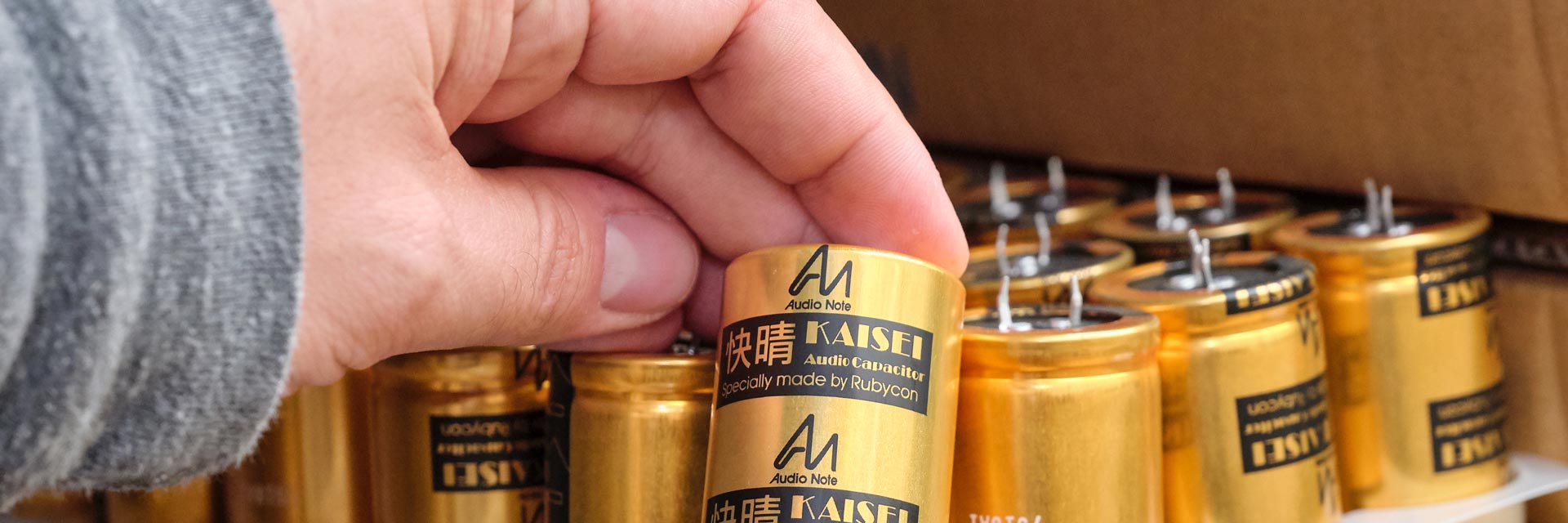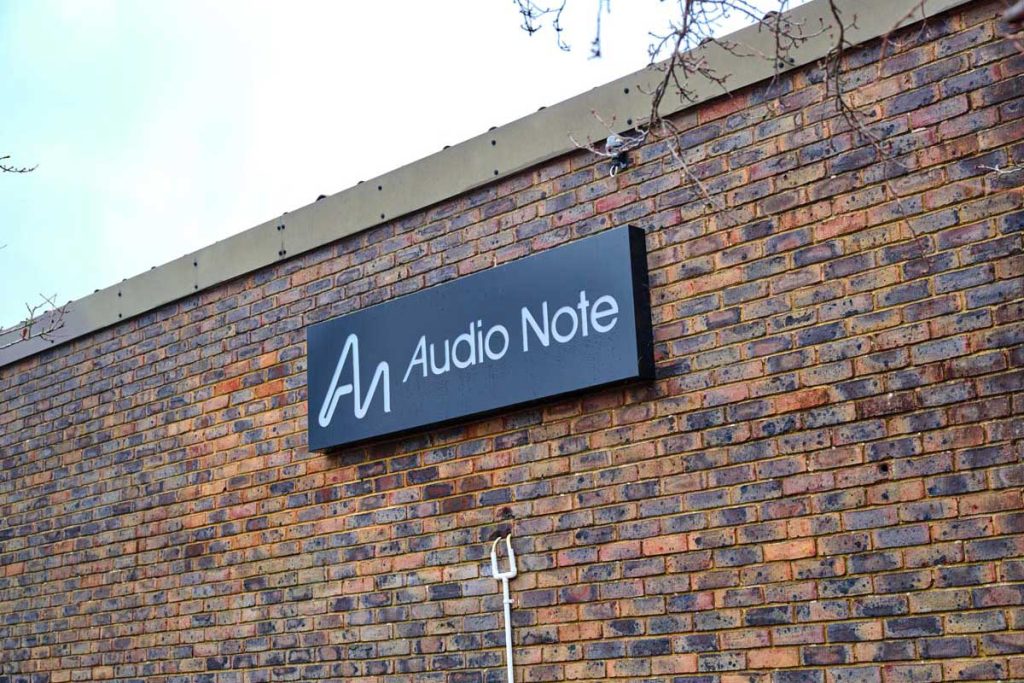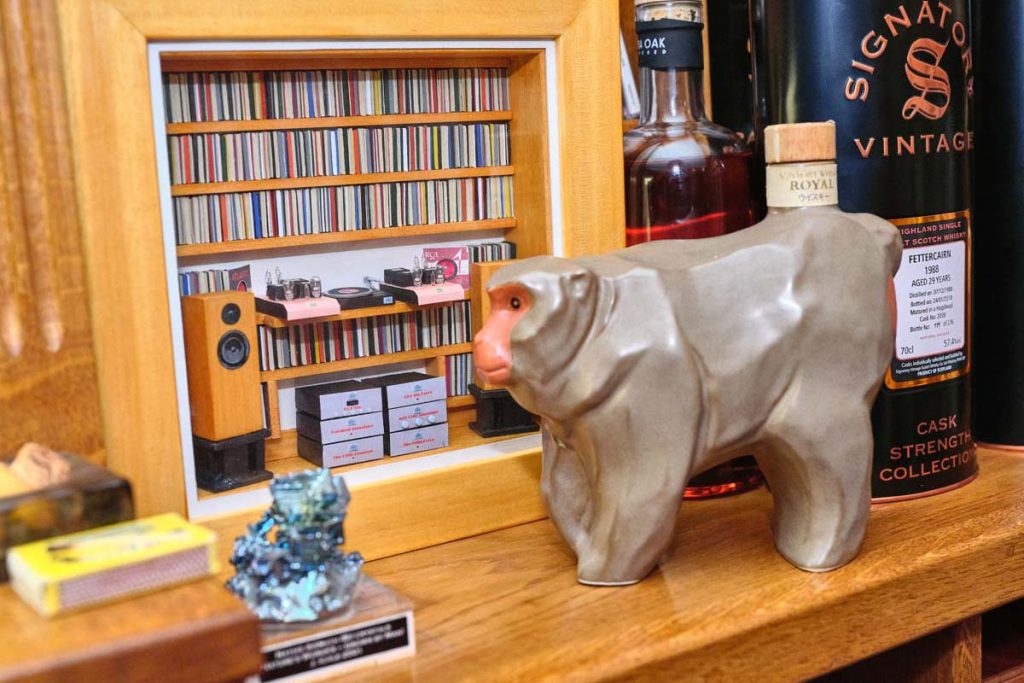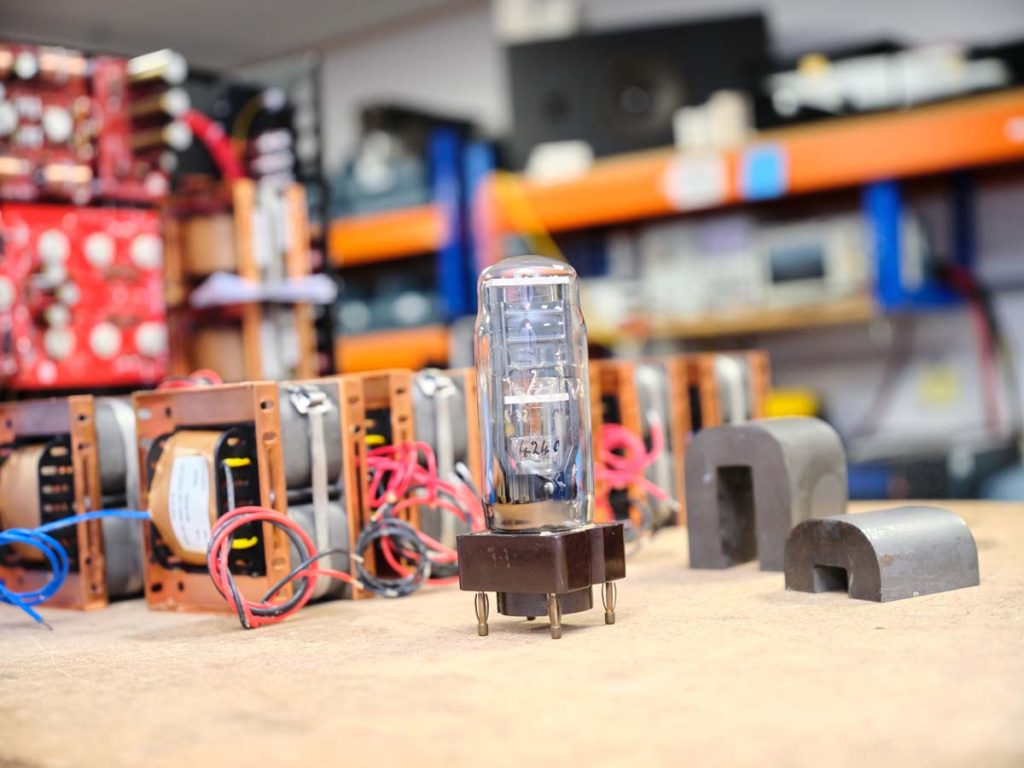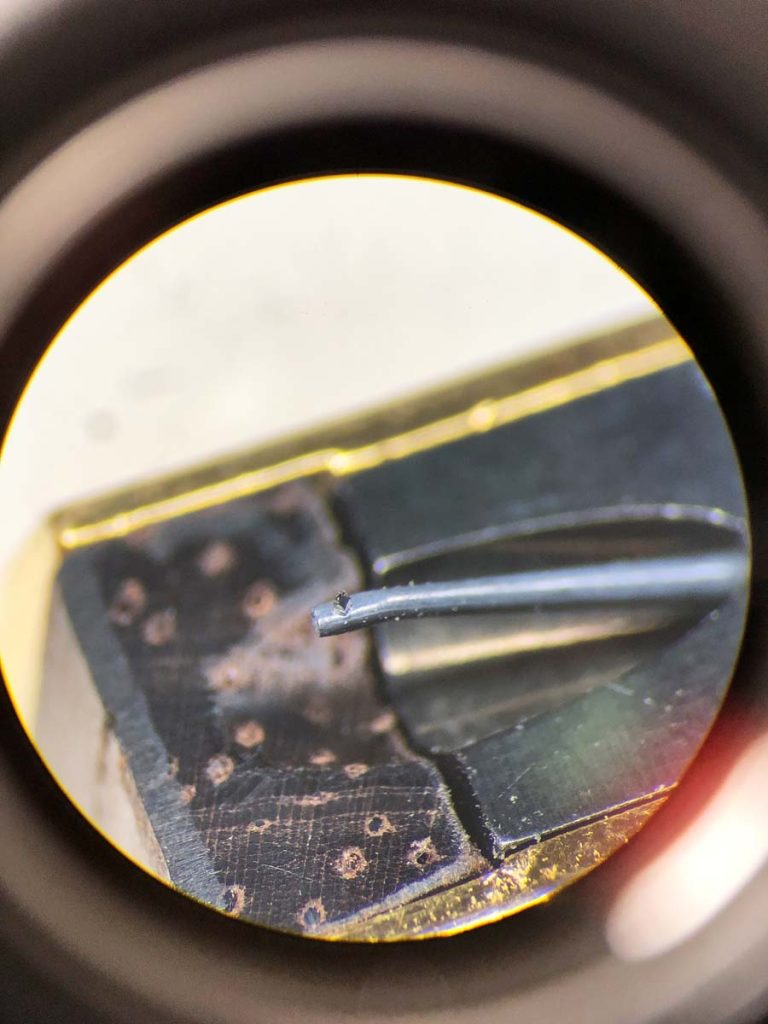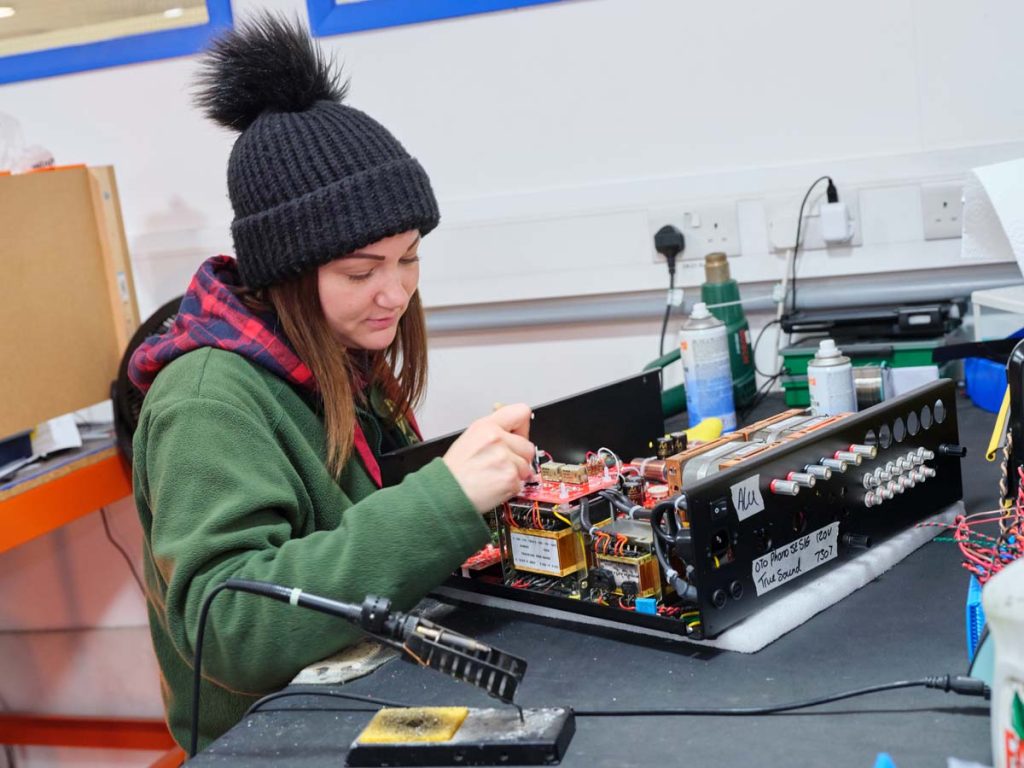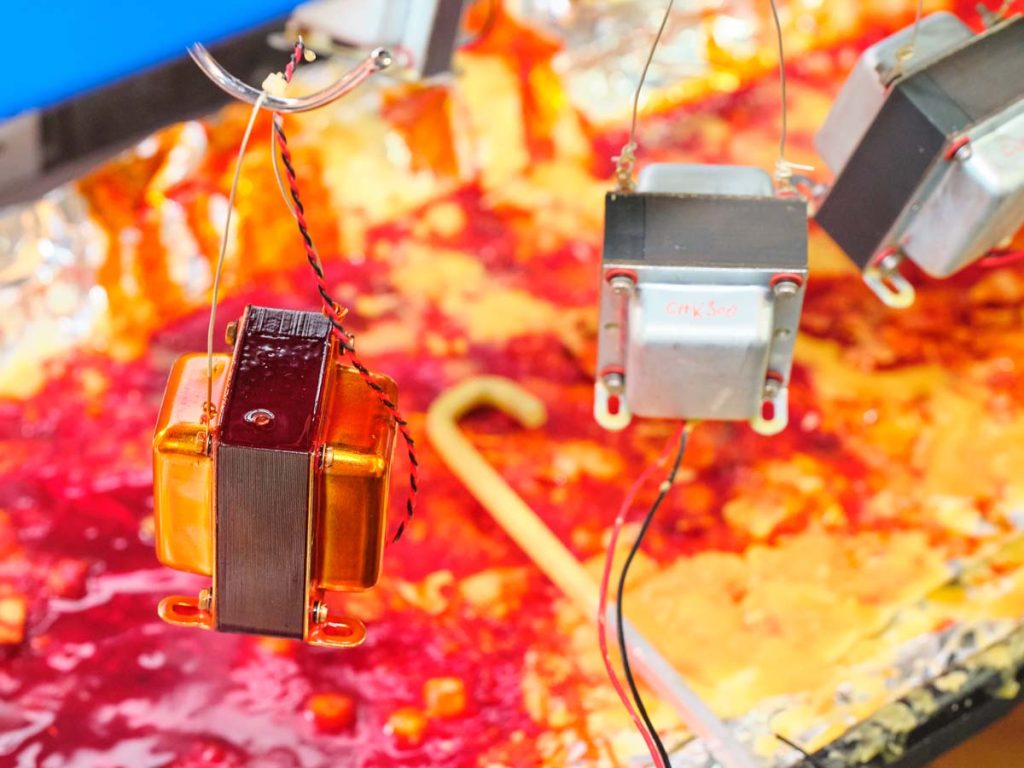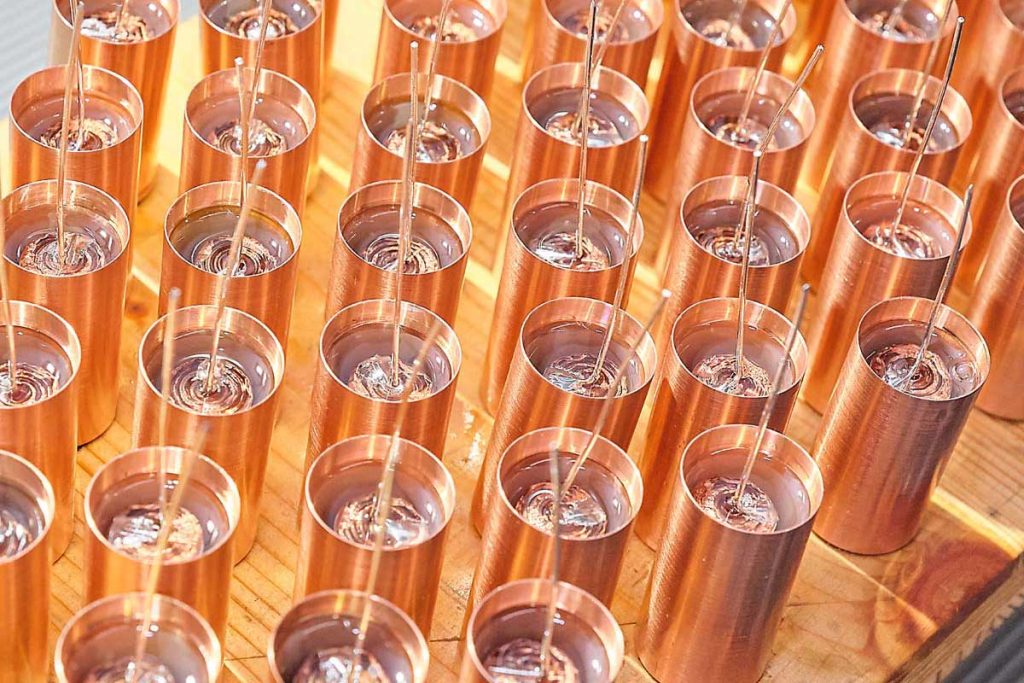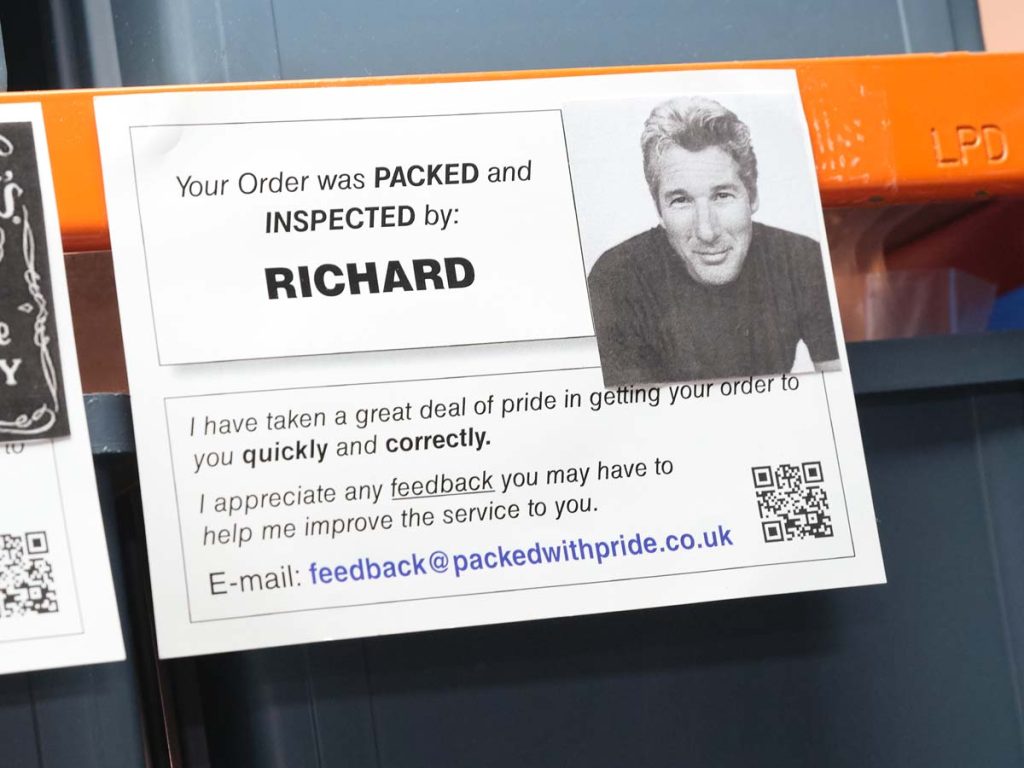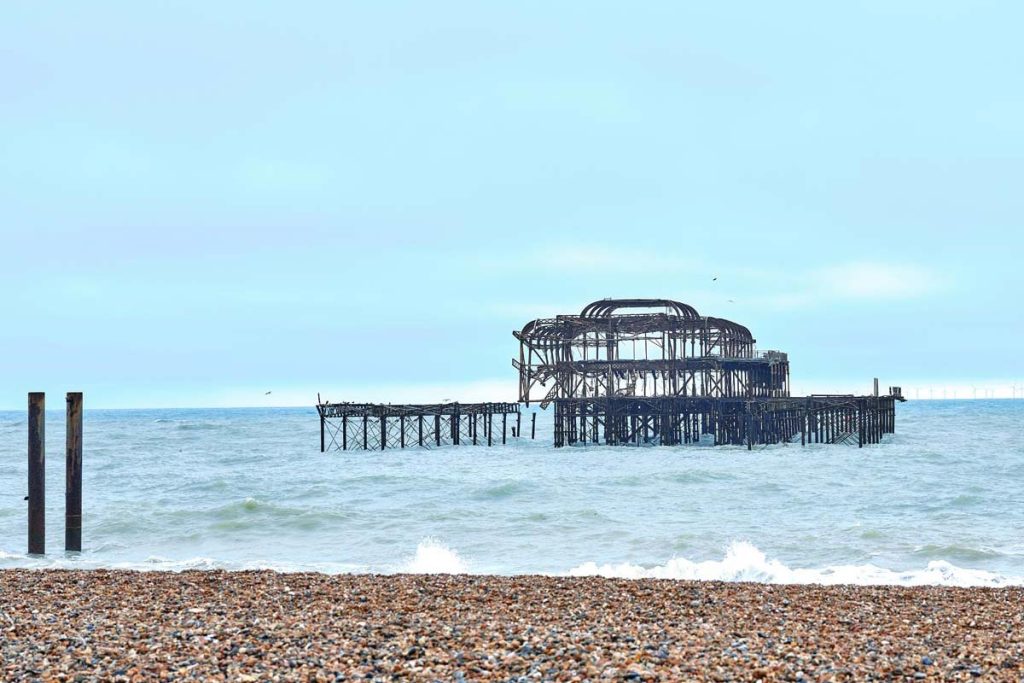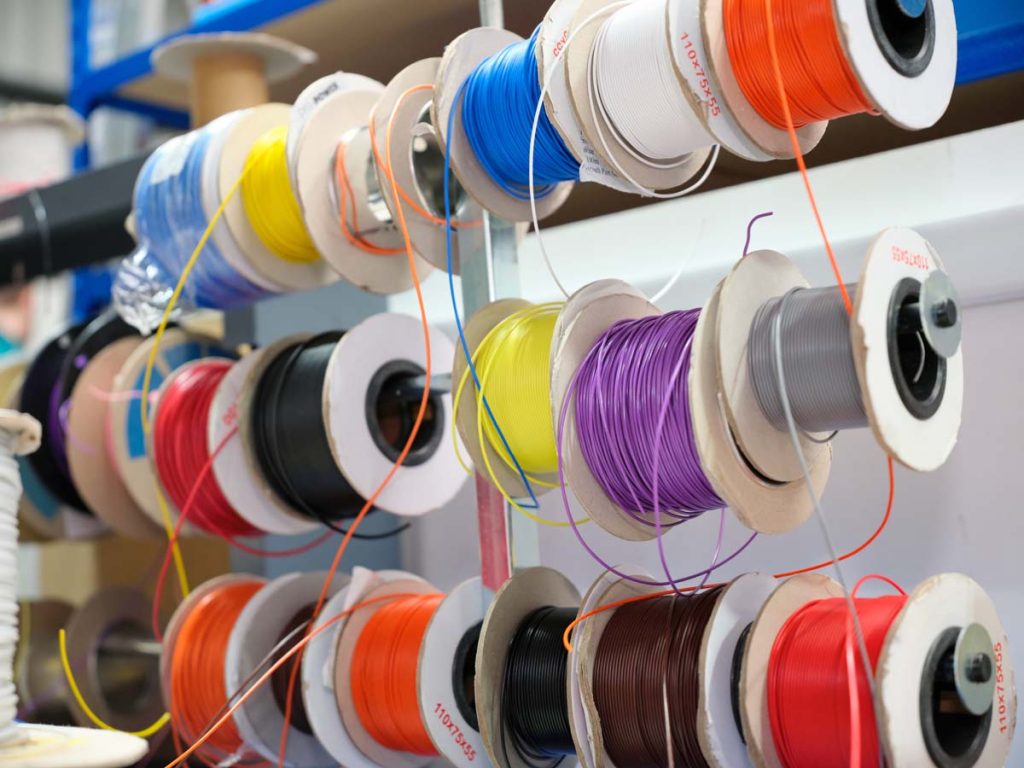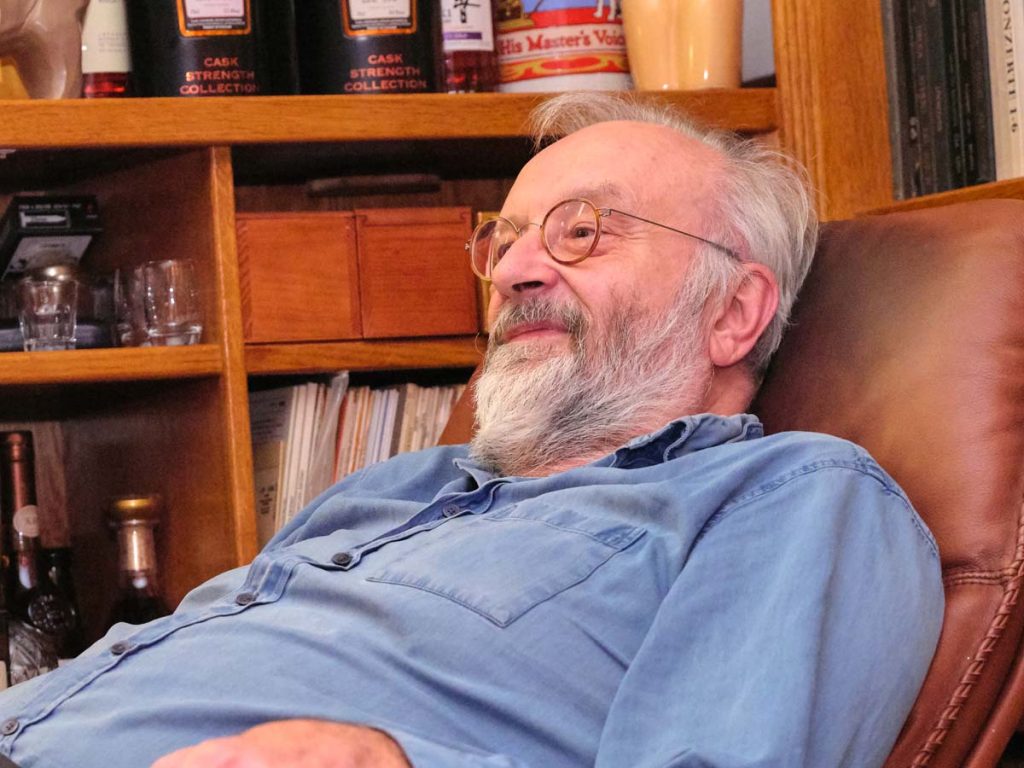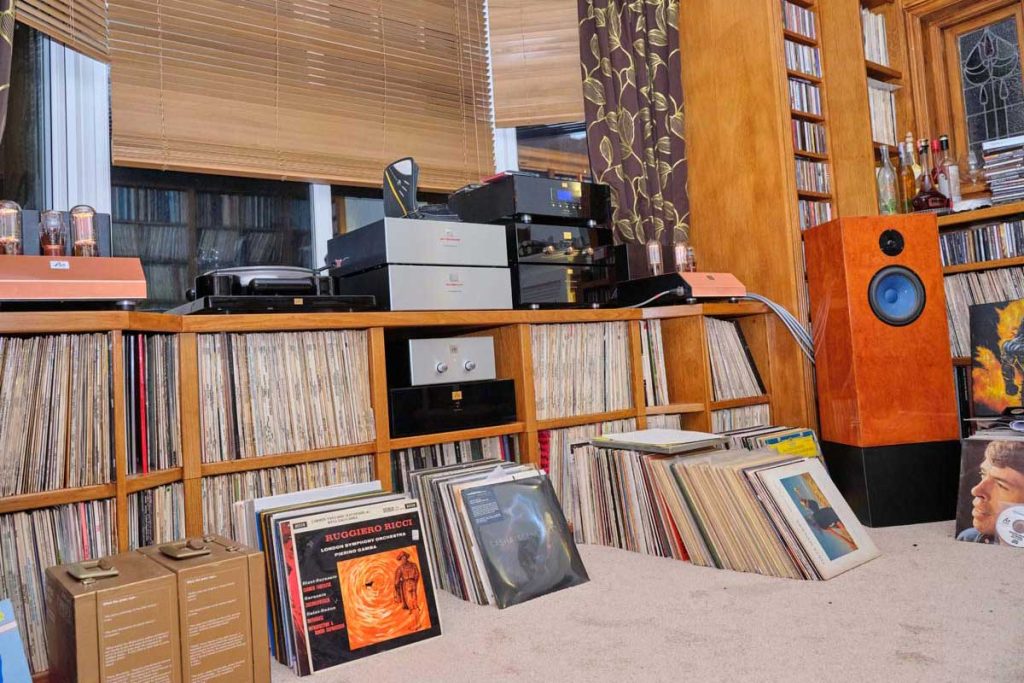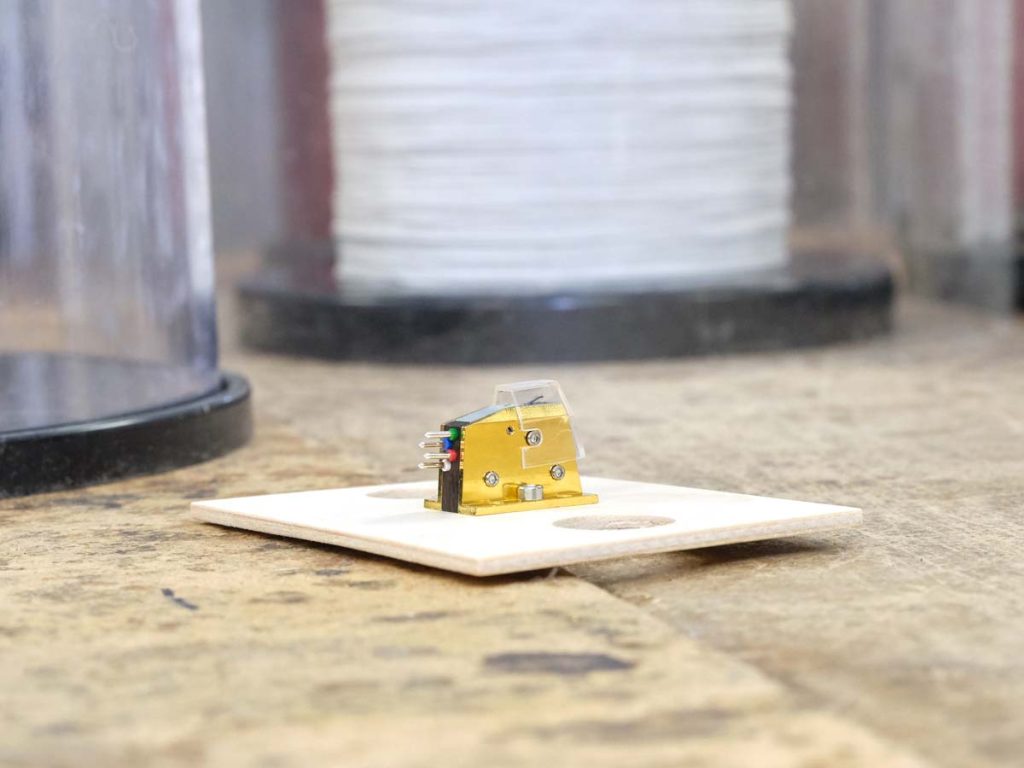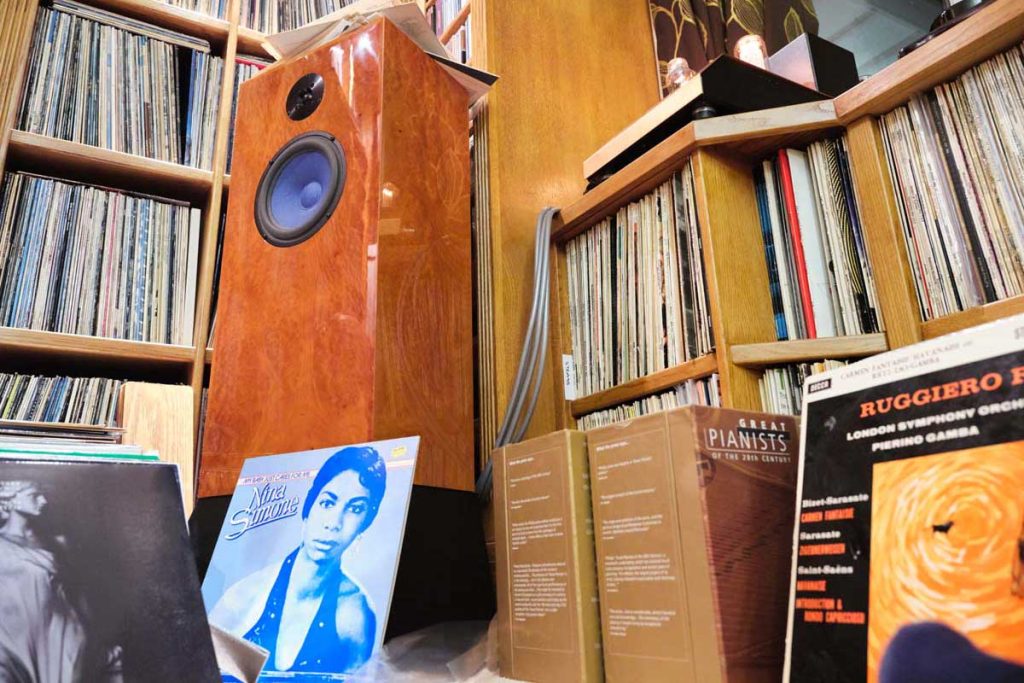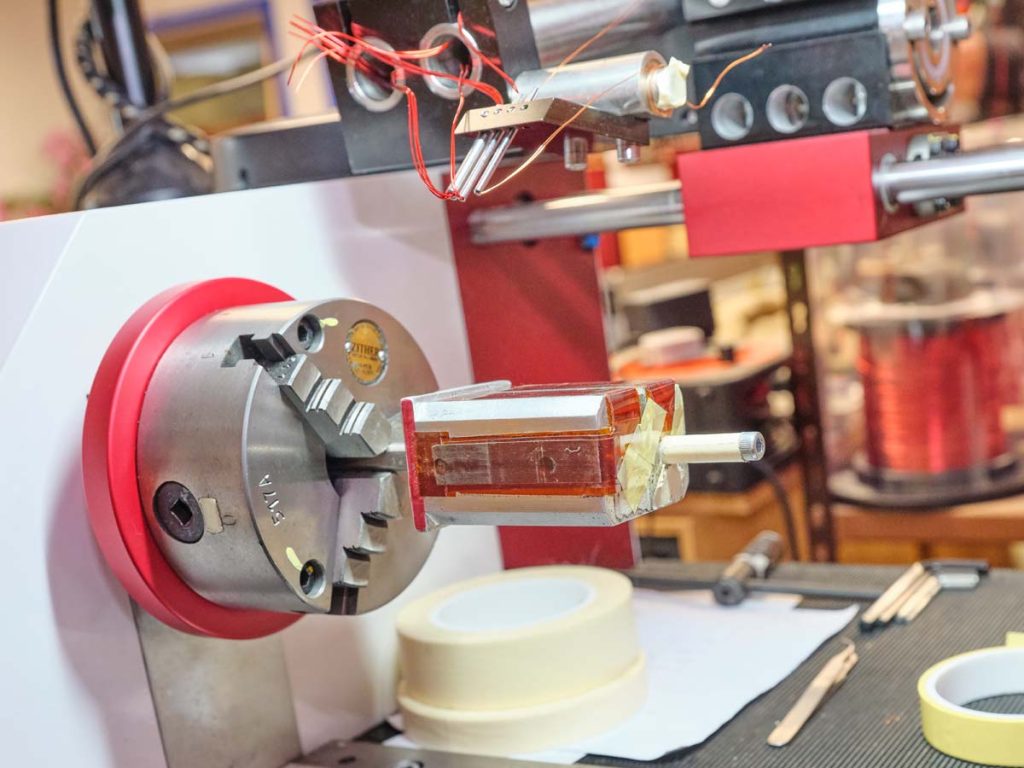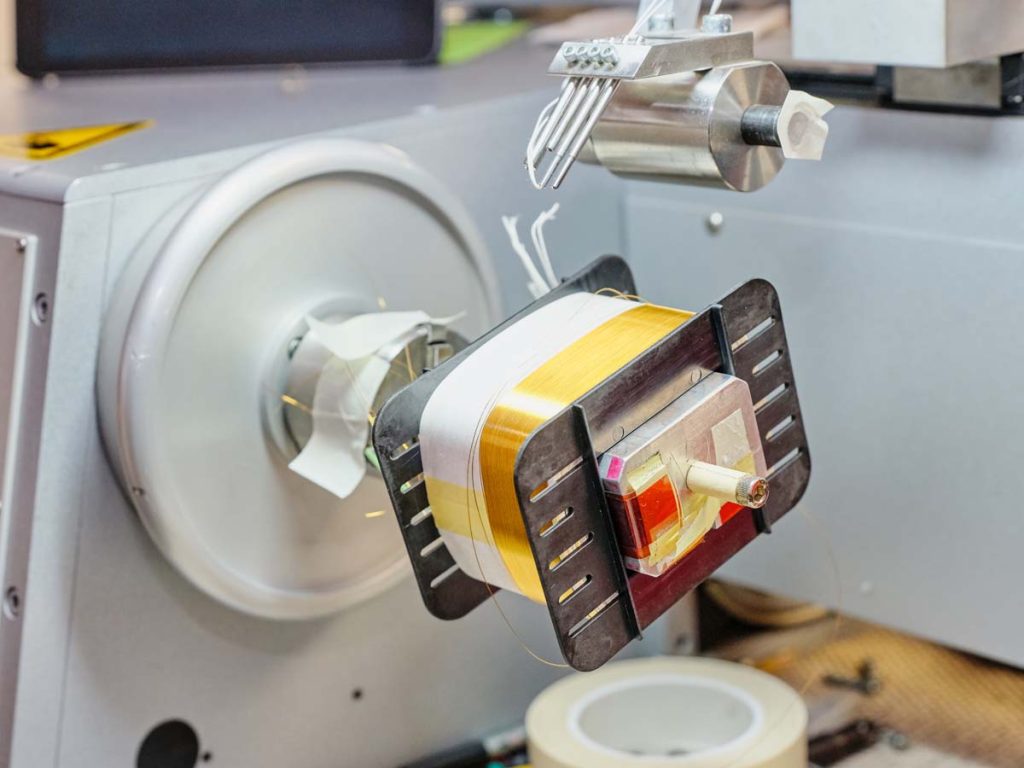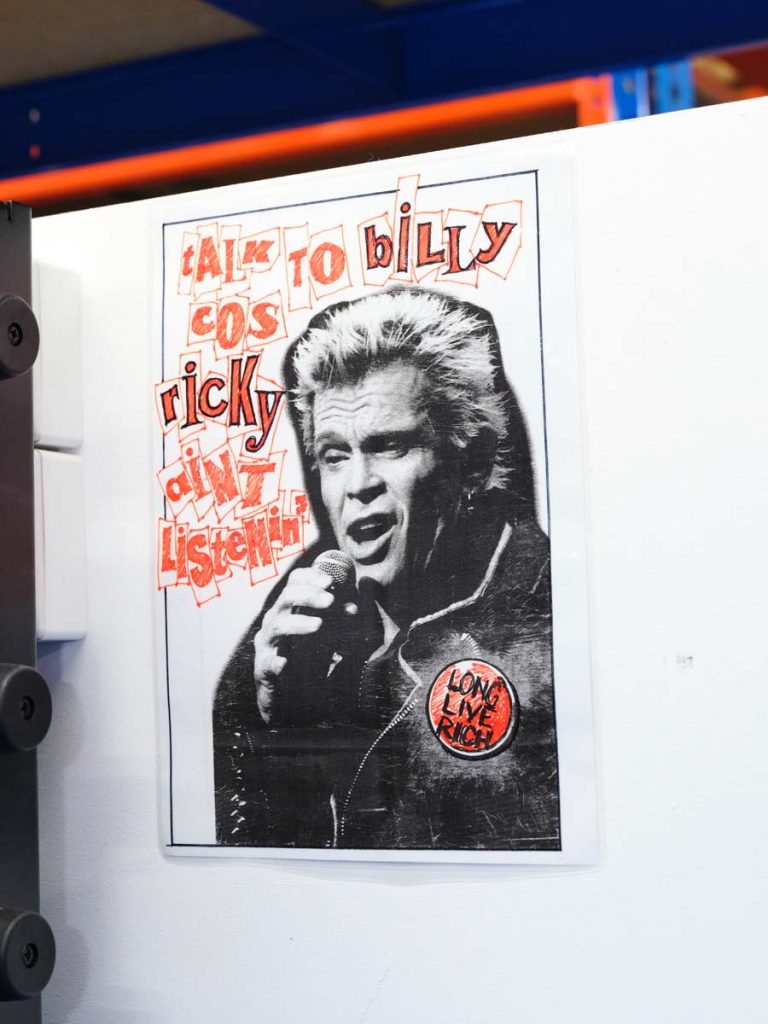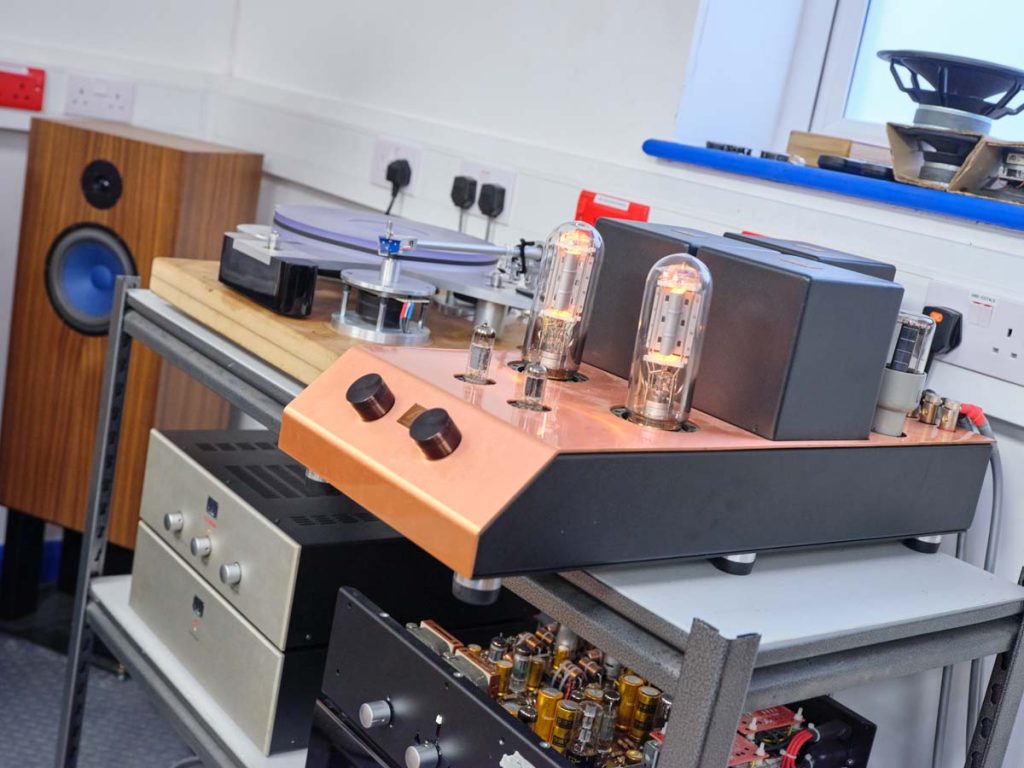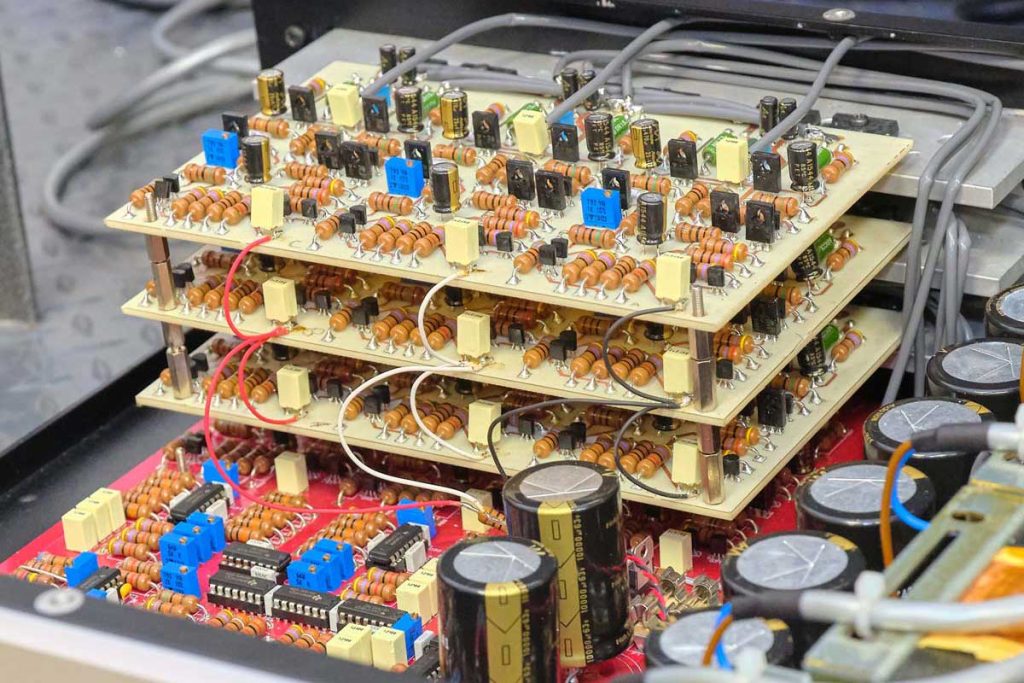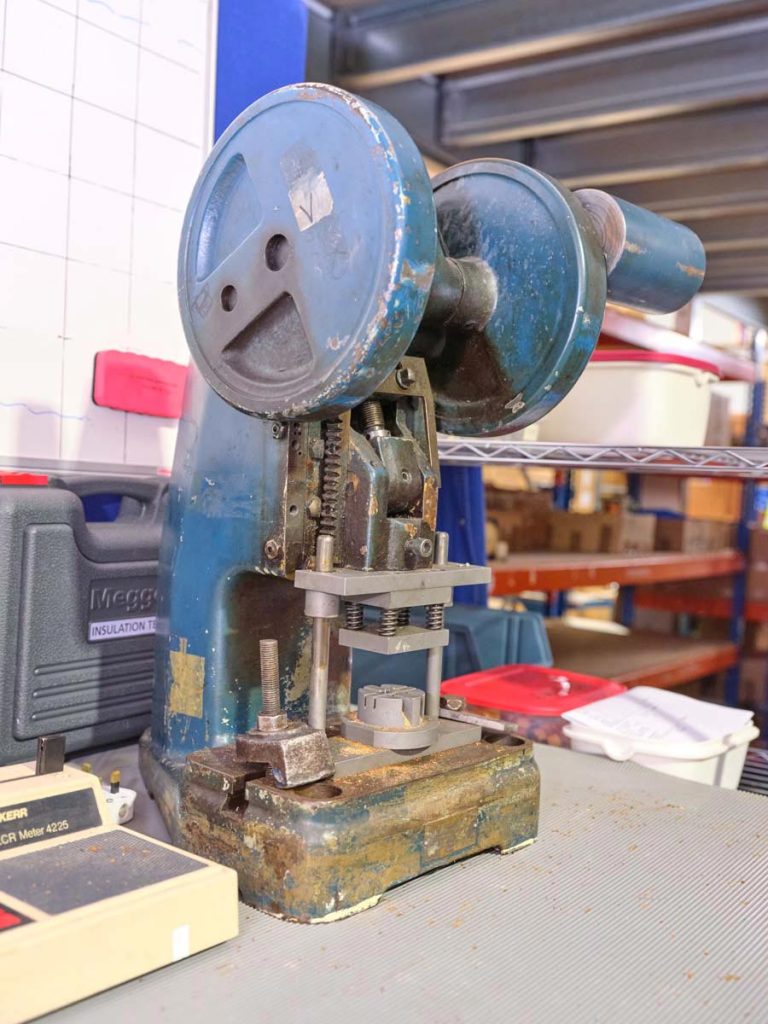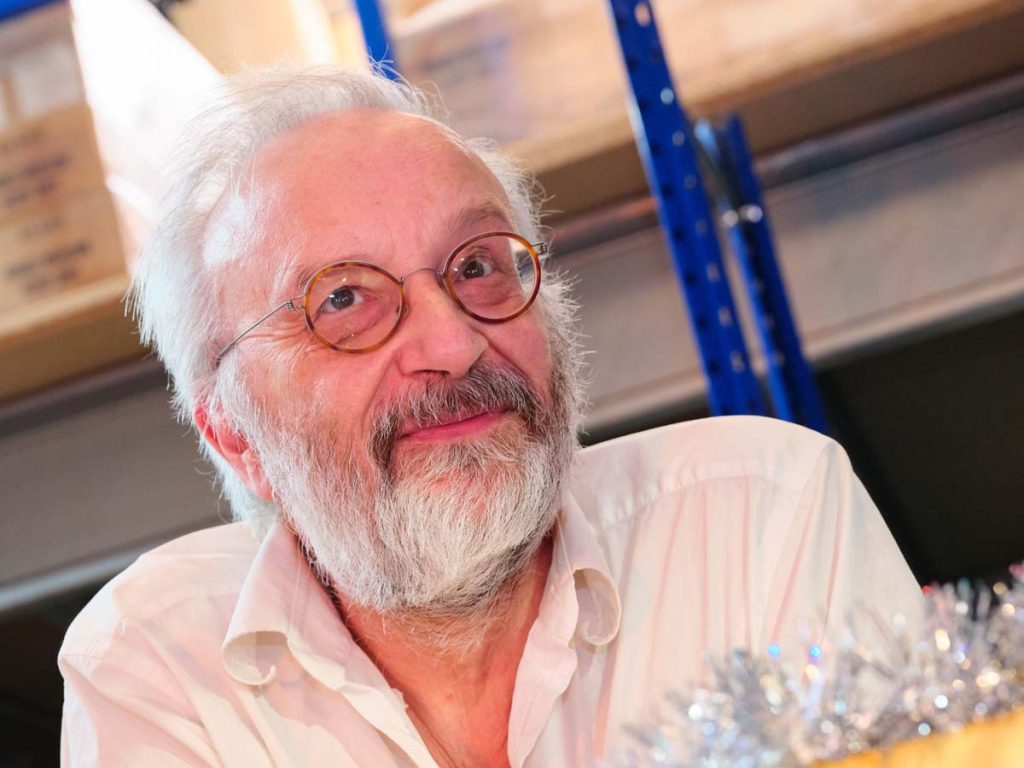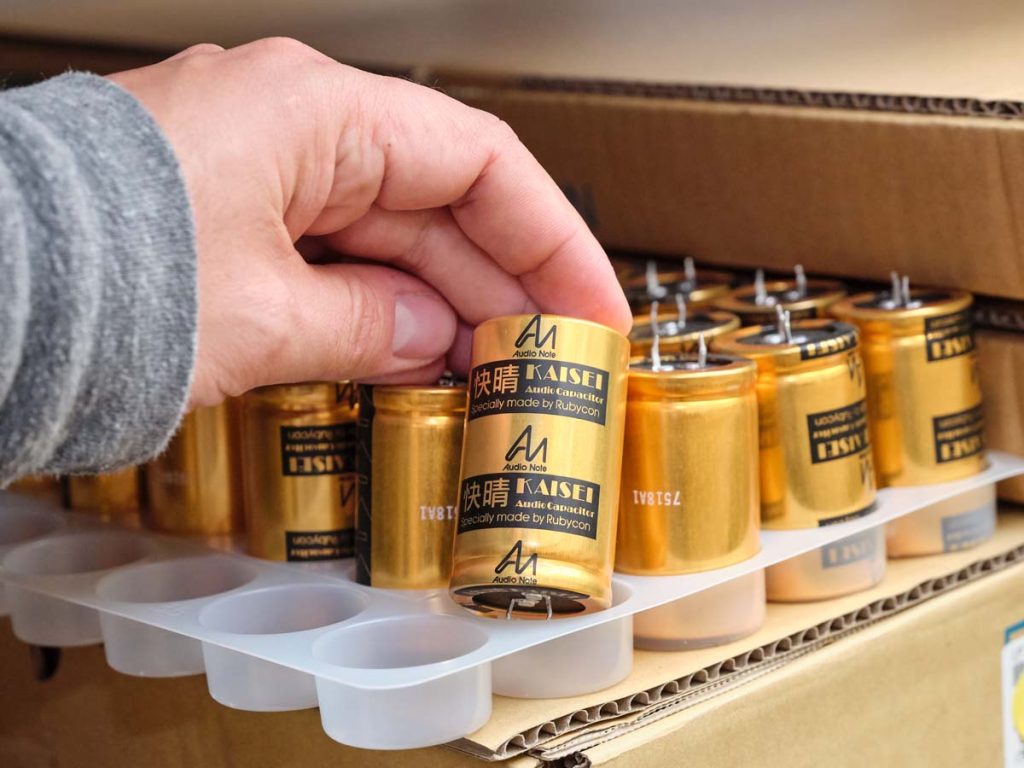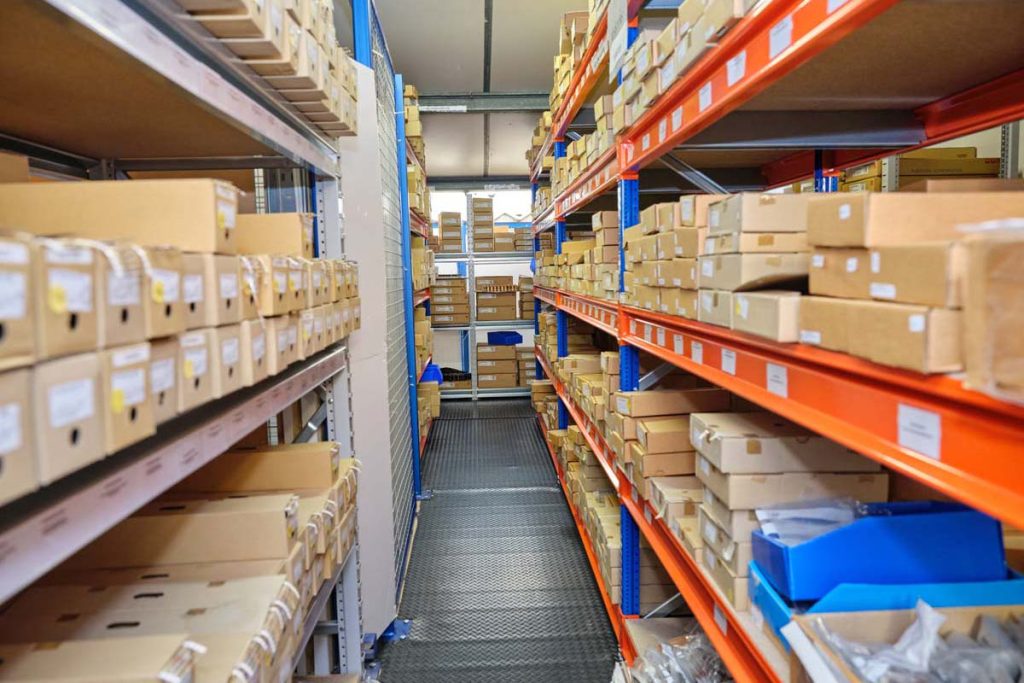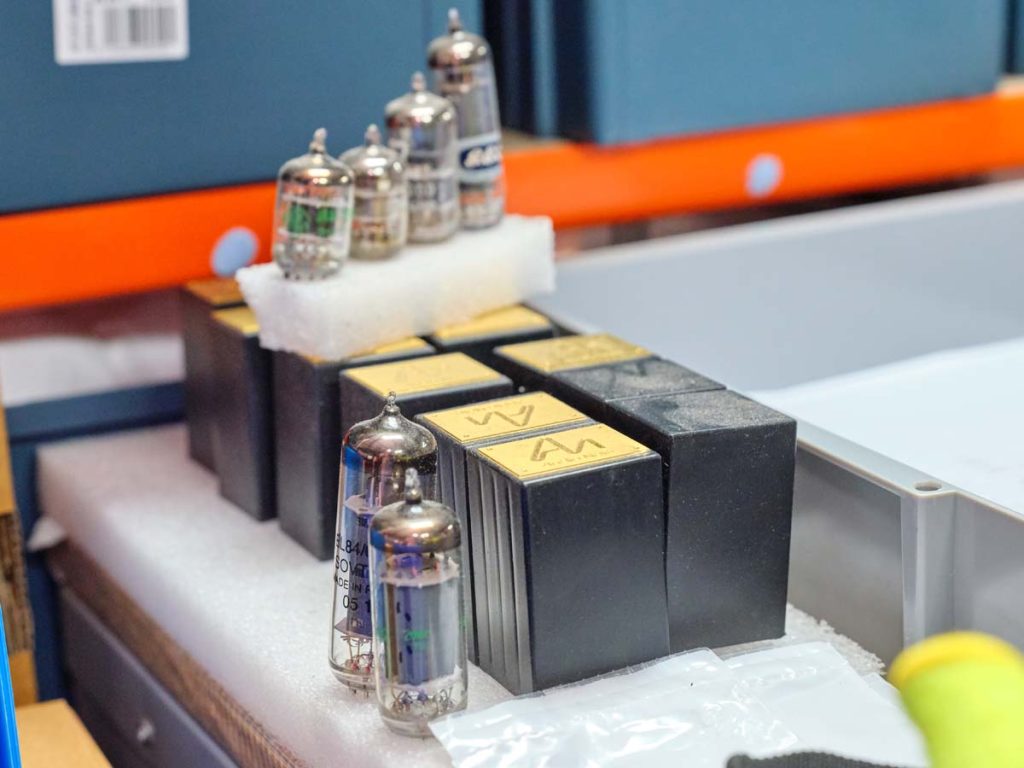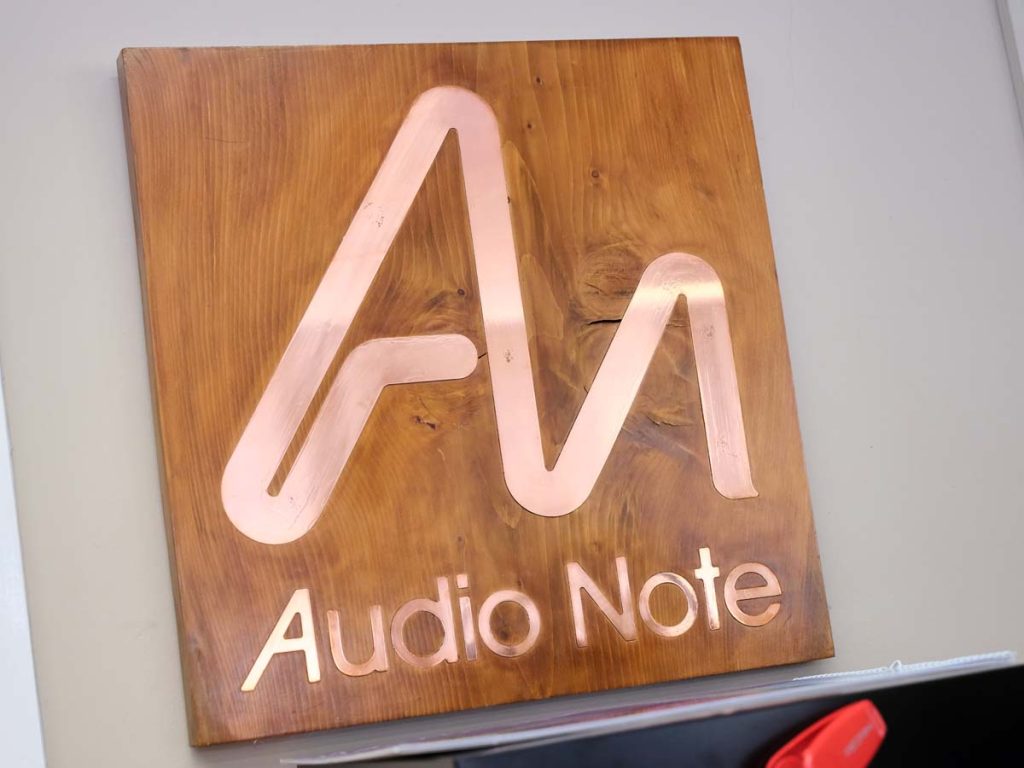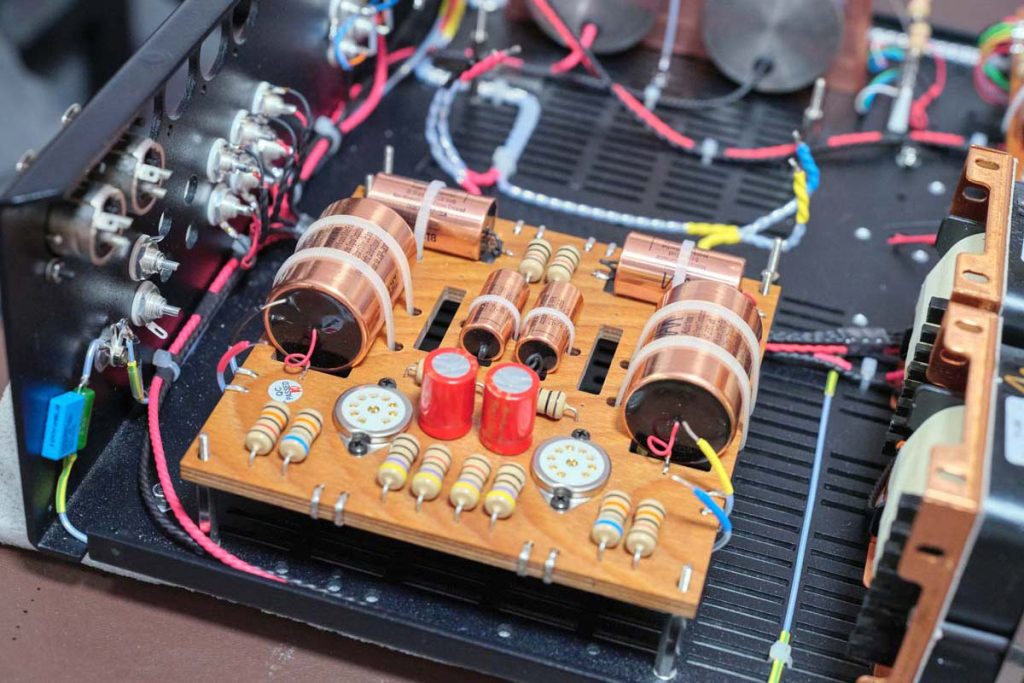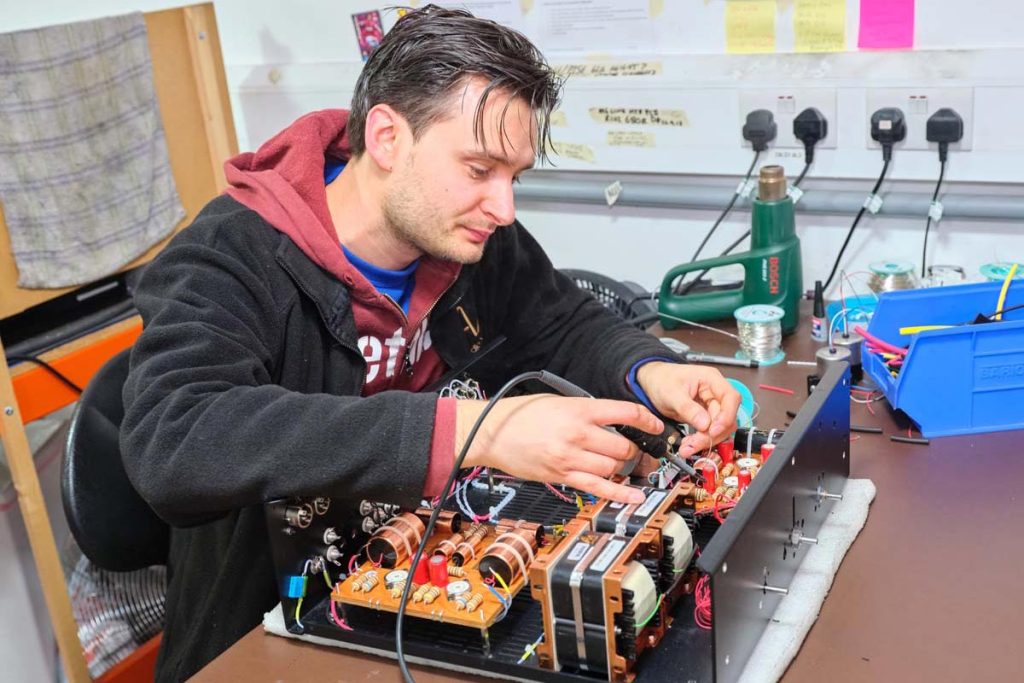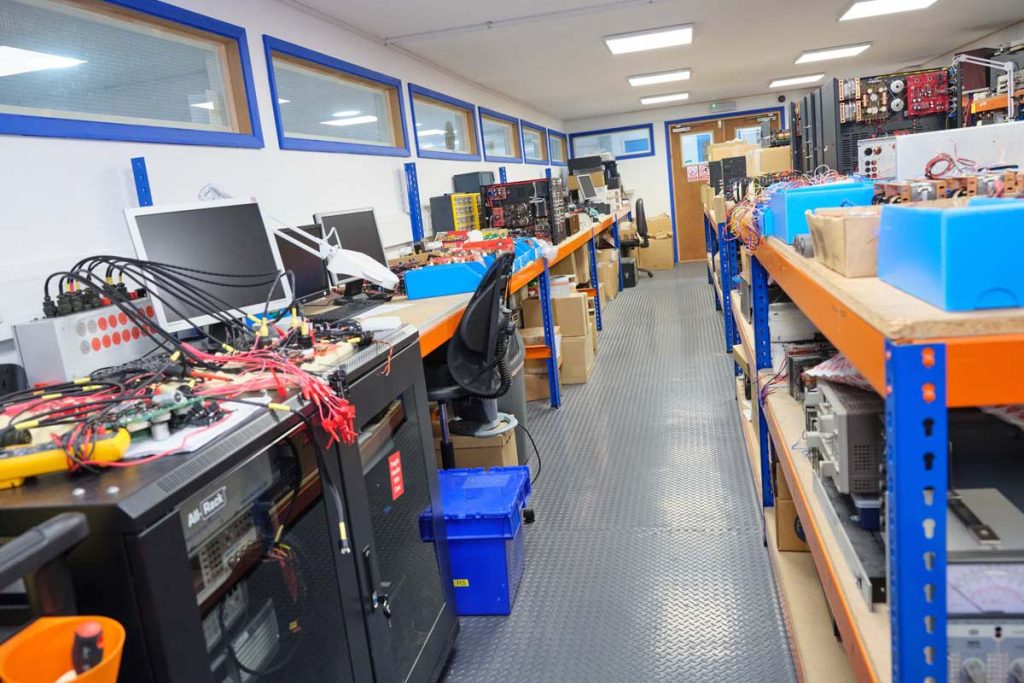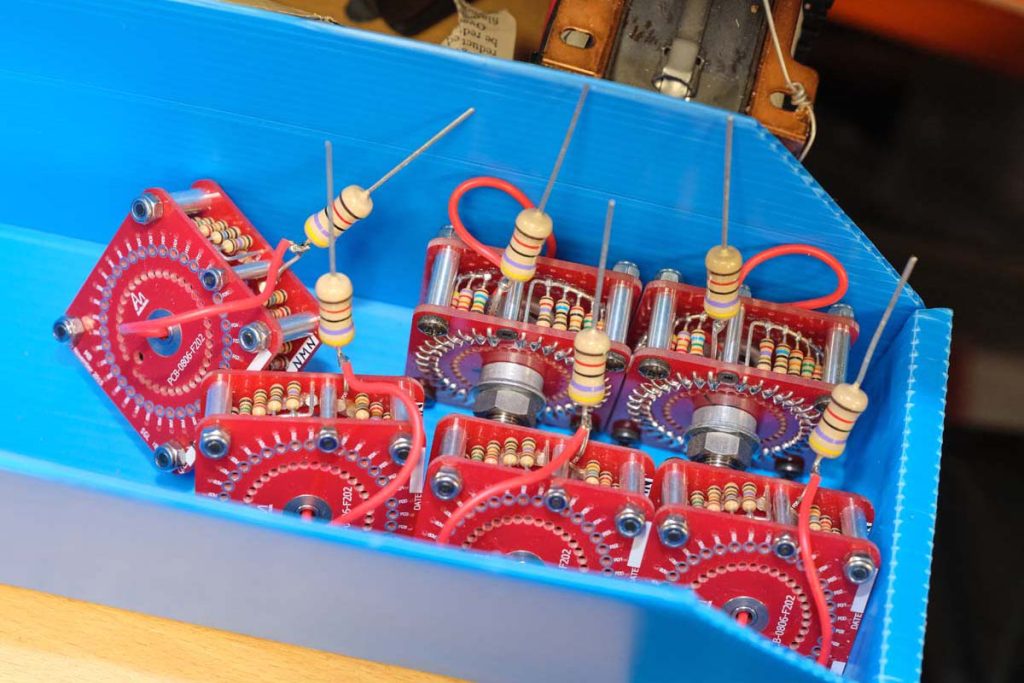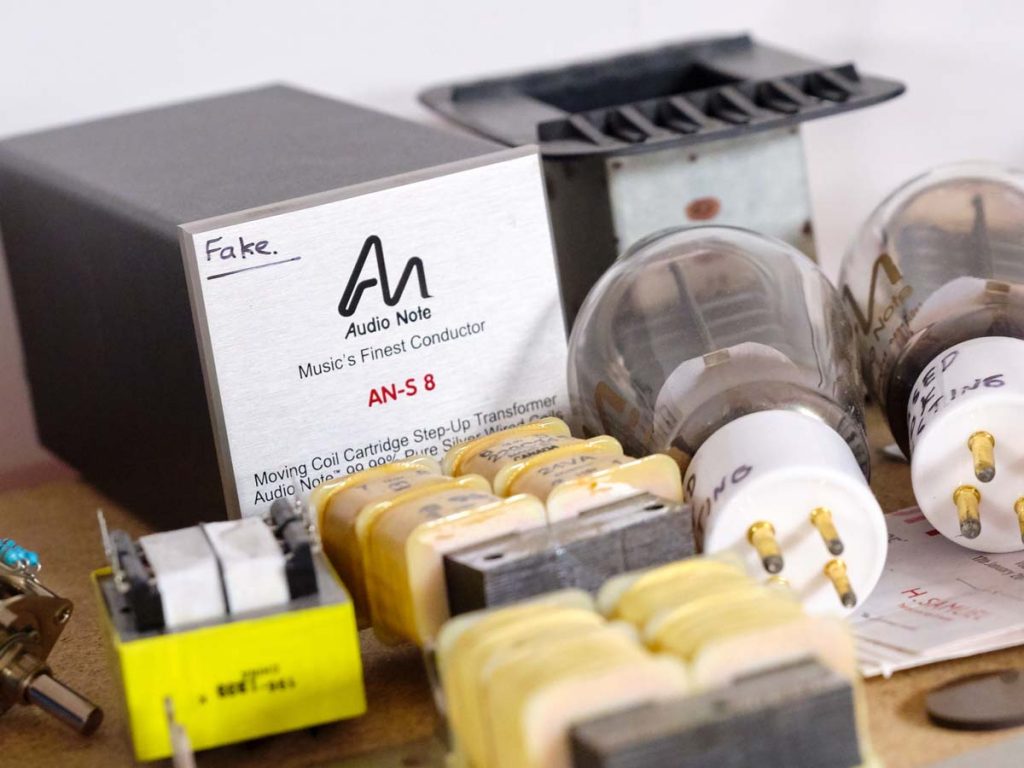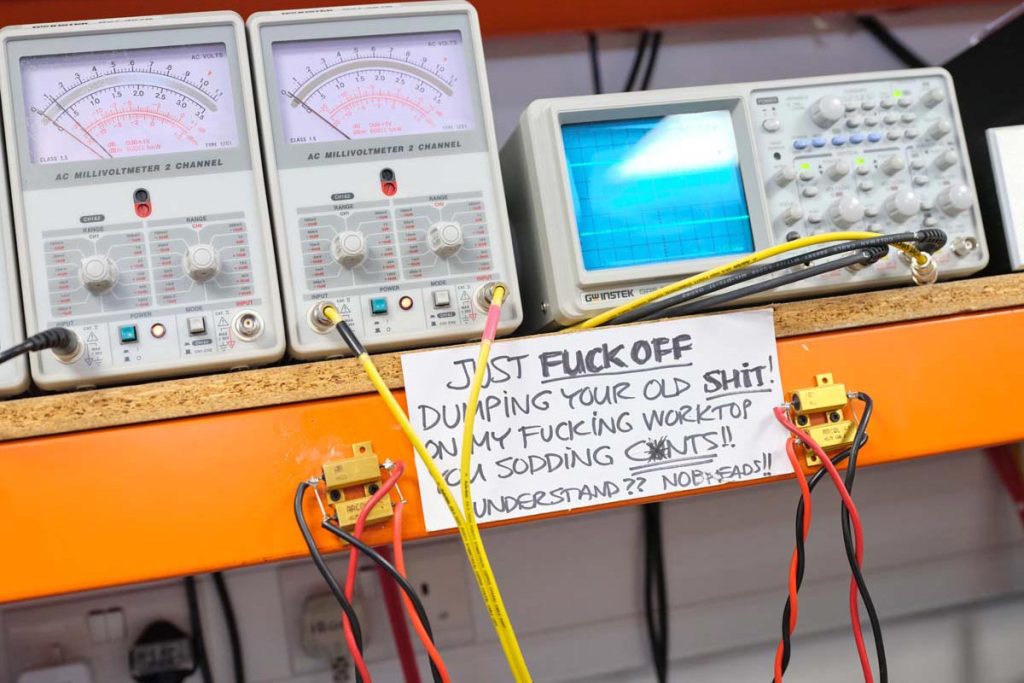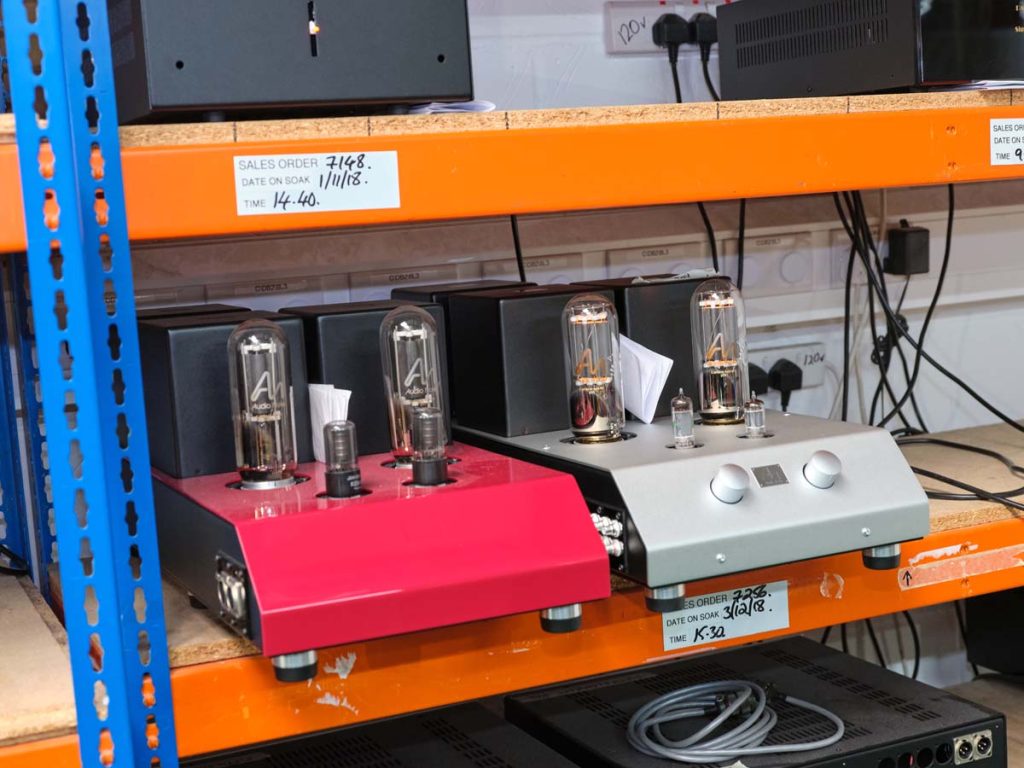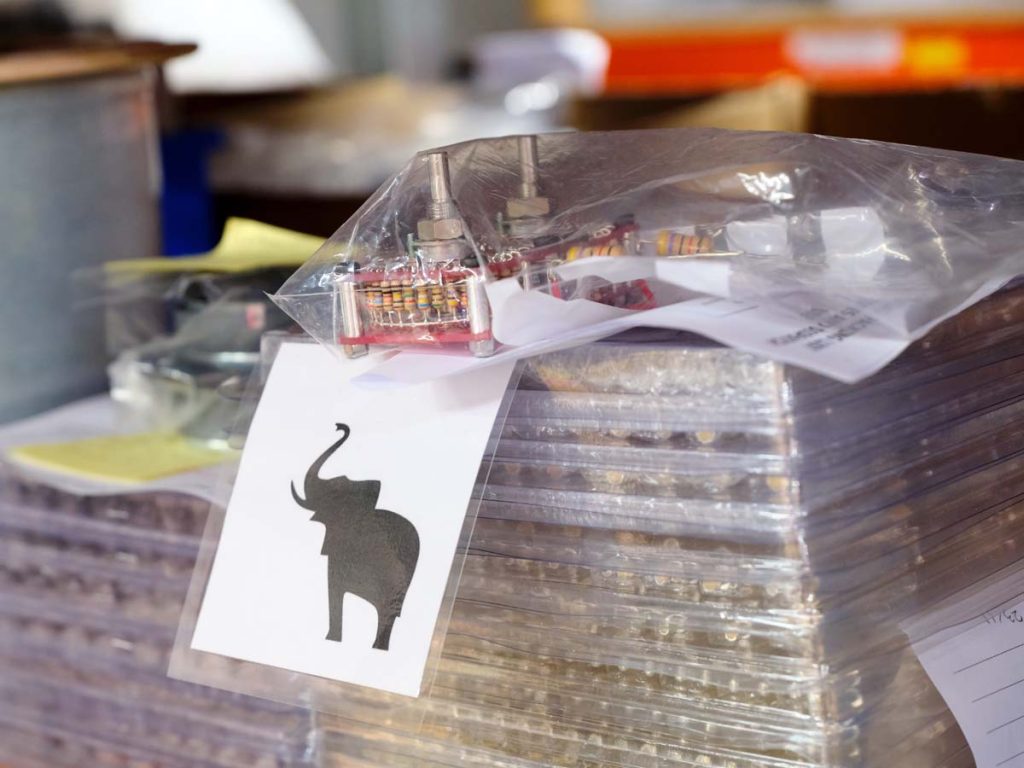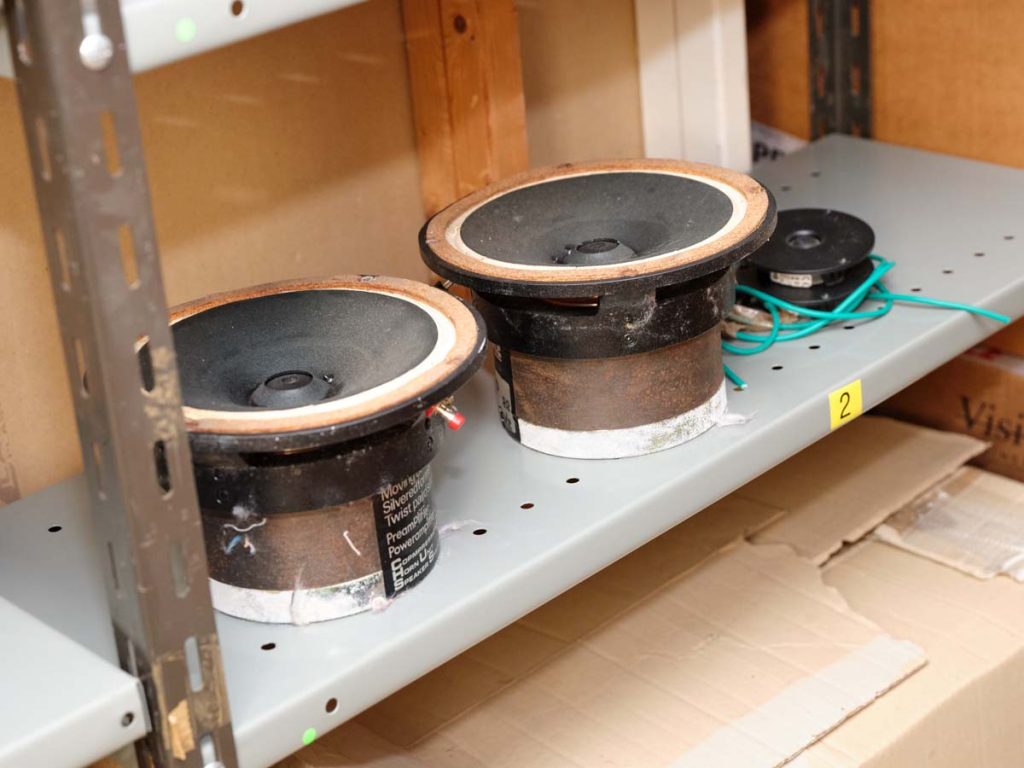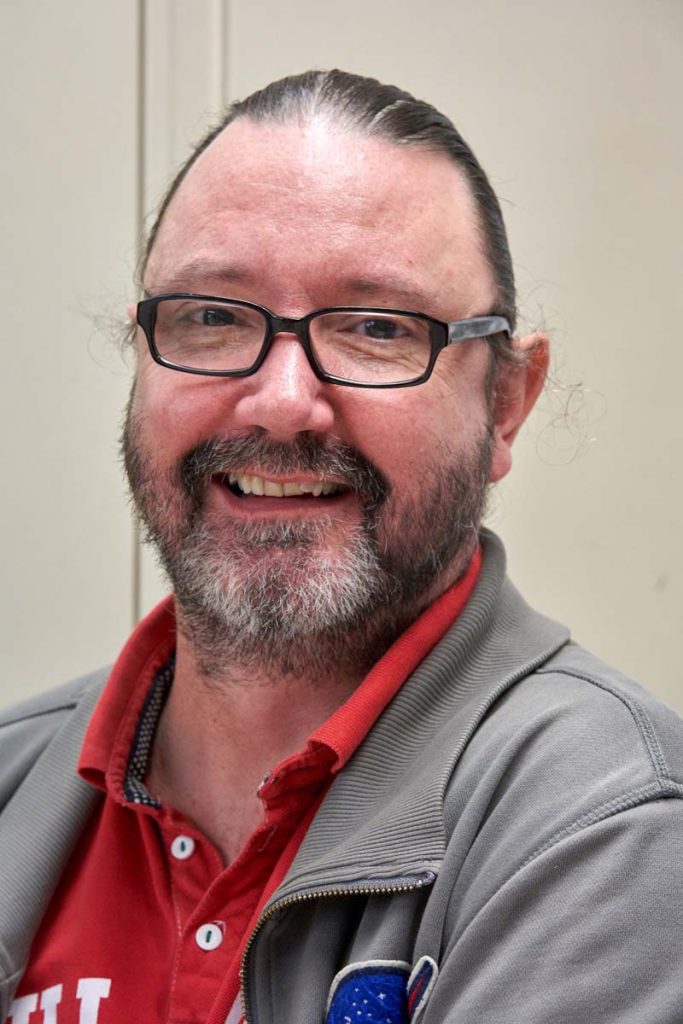Or: What Does Wax Actually Sound Like?
The early-morning flight arrived right on time. England greeted the FIDELITY team with uncharacteristically brilliant sunshine. This was then joined by a sunny smile delivered by Audio Note UK boss Peter Qvortrup, who picked up Mr. Schulz and yours truly from London Gatwick Airport in a Mercedes S-Class that would have long ago earned its retirement and received a special classic-car license plate in Germany. At Audio Note UK though, vehicle is seen and used as a low-tax company car. And that’s by no means the only thing that sets the high-end manufacturer apart from many of its competitors.
After years of decentralization involving various sites strewn far and wide, the company relocated not so long ago, setting up its modest headquarters in Partridge Green, a town located near the seaside resort of Brighton and about an hour’s drive away from the sprawling metropolis of London. As we drove through a small industrial park and rolled up to the premises, we were struck with the surprisingly unspectacular look of the comparatively low-rise ensemble of brick buildings. An unimposing company logo attached to a door identified the main entrance. Parked all around, the Mercedes modern classics, which Audio Note provides to get its employees from A to B, served as the only clue that one of Britain’s top dogs in high-quality music playback is located here. The thoroughly innovative company is chock full of creative lateral thinkers, starting with its boss. Peter Qvortrup is actually from Denmark but has been living on the island for several decades; and, despite the UK’s looming exit from the European Union, he has remained decidedly calm about it all. That Qvortrup had articulated thoughts about relocating parts of the company’s production to EU member states (most Audio Note product components have been manufactured in-house at British company headquarters and so only a handful have had to be procured) revealed the pragmatic nature of a company head who has already weathered many a storm with his business. Cutting the umbilical cord from the original Japanese company was one such challenging feat. A dyed-in-the-wool economics nerd, Qvortrup consumes business and finance literature the way that most people read the daily newspaper. That gives you a good idea about the kind of entrepreneur he is: one that combines great instinct and ingenuity with solid knowledge in equal measure.
In addition, his company’s product portfolio follows a clear-cut course: Audio Note UK systematically deploys tube technology — and not just in its amplifiers but also in the output stages of its CD players and in its phono transformers, for example. Why does this equipment sound better than the cheap Chinese tube devices that have now flooded the market and can be bought for a few euros on certain online portals? Upon hearing that question, Qvortrup just smiled and bit into his coronation chicken sandwich. Then, instead of providing a simple response, he invited us to take a tour of the new consolidated site, which is around three times the size of the previously decentralized premises. The sightseeing tour turned into a virtual roller-coaster ride into the complex audio universe of Qvortrup, a world where truly astonishing manufacturing techniques are deployed by a handful of exceptionally remarkable individuals with immense knowledge and expertise.
To warm up our tour a bit, Audio Note’s charismatic head honcho placed a couple of tubes on the conference room table. Their collection is enormous. Just how enormous was a fact we would discover only bit by bit. On the table before us, in any case, was the finest new old stock. Many a collector or tube fan would’ve no doubt developed sweaty palms and gotten all misty-eyed at the sight of the brand-new-looking 1920s triodes. For Qvortrup, his engineers, and his technicians, the gems, some of which were nearly 100 years old, have actually served, by contrast, as analysis devices: What was already great back then? And what could be improved through, for example, the targeted use of modern materials and manufacturing techniques so the sound quality could audibly benefit as a result? Tantalum plays an important role, indicated Qvortrup. The rare metal has been a significant feature of the components Audio Note has developed and manufactured. Qvortrup explained he had to spend a pretty penny to develop various “formulas” for constructing tantalum resistors. The head of this full-range manufacturer has not wanted to relinquish responsibility for their quality to suppliers. After conducting an extensive series of tests, the team arrived at the conviction that the use of tantalum would result in a “fuller, tighter sound.” “Resistors only sound the same in theory,” Qvortrup emphasized before adding: “You can’t measure the difference, but you can easily hear it.”
As we continued our walk through Audio Note’s incredibly spacious premises, the initial impression we had of the company just deepened: They operated differently at this think tank and conventional development, production, and marketing approaches were scrutinized and then always willingly discarded if need be. Assembly lines were nowhere to be found — but then again, there wouldn’t be much point using them in view of the number of units produced in Partridge Green. That meant we discovered all manner of clues pointing to an exceptionally broad range of in-house manufacturing operations. Partially finished transformers were lined up next to a very high-quality (and fittingly expensive) winding machine for transformer coils that was placing wire layer upon wire layer with pinpoint accuracy.
In another room, we spied stacks of circuit boards made from a wide variety of materials that even included “Panzerholz,” a hardened panel material well-known in the audio scene. Known here by a different name, it has also been put together somewhat differently. As we spoke, Qvortrup would sometimes refer to the competition in the audio sector as “toy companies.” He was only half joking. That’s because “they talk the talk, but don’t really walk the walk” and because at times they just make a fancy housing, assembled it around a mish-mash of procured components and then advertise this — according to Qvortrup at best an average product — as a groundbreaking in-house design.
At Audio Note UK, almost all components, including those under the cover, bear the simple, unpretentious “AN” logo — and the FIDELITY team got to witness these components being manufactured from the respective raw material. The company has placed sound quality at the heart of what they do. In one reflection of this, R&D Engineer Darko Greguras showed us a selection of circuit boards with different substrate (see above) and various circuitry layouts: “In terms of measurement values, they’re all the same, but the sound is radically different,” Greguras explained with a smile. He then indicated the vibration characteristics of the circuit board’s base material have a direct impact on the sound properties. Incidentally, in Partridge Green it’s possible to measure a signal-tonoise ratio of up to 140 decibels(!) — elsewhere, analysis devices would have long given up by that point.
Audio Note UK, typically starts a new design “with a blank sheet of paper,” initially considering the possible circuitry configurations well before heating up a soldering iron. “Others take a look in their circuitry diagram books and end up grabbing a laser-trimmed ready-made module from off the shelf to sell as many units as possible,” Qvortrup stated acerbically. This approach would never work at Audio Note UK, given their self-imposed high quality standards: “We’re a research and development facility that also happens to sell finished products,” Qvortrup confidently asserted in summarizing his company’s mission.
By implication, this has meant that every component, every circuit, and every layout has been permanently put to the test to determine whether any improvements could be made and whether a modification at a crucial point could have a positive impact on the resulting sound quality. So, for example, only silver cables with the highest possible level of purity run through the large power supply units because, to put it simply, they offer less resistance to the current flow. Service engineers such as James Healey don’t just test the end products once but several times. And they slam on the brakes should they encounter any serious issues, even if there’s only the faintest indication of a problem. After all, end customers shouldn’t receive anything but products worthy of being deemed “perfect” — from the little Zero entry-level combo to the titanic Ongaku integrated amplifier, which today hardly shares anything in common with the original model except the name. Improvements carried out over the decades are clearly evident with this model, for example the replacement of copper with silver in the tube circuitry.
As a reminder, the Ongaku’s anodes are supplied by a voltage-doubling circuit. A typically British CV4068-type double triode is connected to a 6463 double triode over an Audio Note coupling capacitor. The driver stage and output tube are connected by a coupling transformer, and the driver stage works on the coupling transformer’s primary winding; thought up by Andy Grove, Audio Note’s senior design and R&D engineer, the idea helps achieve an impressive bandwidth. This transformer doesn’t need any resistance on the secondary winding and instead works on the almost endless impedance of the output tube’s grid. The company is particularly proud of the input stage as it features a Telefunken 6463, new old stock from Audio Note’s formidable tube stock. The next stop on the tour saw FIDELITY Managing Director Ingo Schulz going crazy when he got to head up a set of stairs to check out that very same stock. The company stores its real gems up in the attic. There, secured behind a sturdy barred door, we encountered a pretty enormous tube collection that, a visibly proud Peter Qvortrup told, contained well over 100,000 units.
The items he showed us were neatly arranged in large piles in their original packaging. They not only guarantee Audio Note devices have a supply of spare parts for many decades to come, the tubes also form the ideal basis for testing new ideas and checking out old designs to see what future potential they have. Of course we spotted 300B and KT88 tubes of various origins — even lots of originals, still in their original boxes, since turned yellow, from back when tubes were still the height of amplifier technology. The collection, probably the lion’s share of the world’s known stock, even included quite a few types that had once been developed for military use. Qvortrup also treated us to seeing many tubes that only insiders would be familiar with and were possibly waiting to be used by Audio Note UK: from the teeny-weeny 6111WA, which ensures great sound quality in the output stage of the company’s smallest CD player, the CD Zero, right through to the British-produced Osram DA 60, which rarely changes hands once a person owns it and operates at around the same performance level as the much more famous 300B.
Our next delight on the tour would give fans of high-quality capacitors the vapors: There in bountiful supply stored in the room right next door were Wonder Caps, Black Gates, and many more of good repute among electronics freaks on the DIY scene as well as some capacitors that DIYers wouldn’t be able to lay their hands on for love nor money because they’re from the huge collection of exclusive Audio Note in-house creations. You see, in Partridge Green, they don’t place orders with suppliers. They simply take what they need from their shelves, though sometimes only to have a template for a significantly enhanced tube replica. Qvortrup has a collection of around 40 triodes from the 1920s, for example. The company has had a metallurgical-analysis measuring device for quite some time now. It was even used to test the Osram tube’s mesh anode. In Audio Note’s new version, this is damped with molybdenum. “It should sound a lot better than the original,” a confident Qvortrup stated.
When a prototype is ready, the team listens to it over and over again until the end result truly meets the requirements; damping measures play a very important role in this. “Few factors impair sound quality as much as unwanted vibration,” Grove, the senior design and R&D engineer, stressed. Drawing from his own experience, Audio Note’s developer for European business, Andy Whittle, who actually has a background in loudspeaker construction, seconded Grove. Nothing that vibrates uncontrollably can sound good. And, in the eyes of the Audio Note crew, that would apply to all, and we mean all, components. What that means in reality became clear to the FIDELITY team by the transformer finishing stage: When such a current converter is done (the thickness of the lamellae is 0.2 millimeter thanks to an innovative manufacturing technique), it is immersed in a special wax bath to prevent the wire windings from taking on any life of their own. “Different types of wax also sound different,” Grove revealed, a hint of a smile playing on his lips. The fact that the drip table under the transformers looked like a (rather unfortunate, overcooked) pizza and smelled like a Russian chemistry lab was testament to the intensity of the experimental testing.
Nothing is taken for granted at Audio Note UK, and Qvortrup’s specialists even scrutinize time and time again what they’ve already developed — and they meet with success, too. Yet everyone in Partridge Green seems to carry out their workday with sense of calm unlike we’ve seen anywhere else, a calmness that does, of course, include enjoying regular tea breaks out back behind the buildings. We could dedicate an entire article to the cartridge manufacturing process at Audio Note: In a permanently closed room, MC coils in comparatively small layers are wound and soldered by hand under a microscope. Given the pure workmanship carried out here, the output of little gems such as the IO Gold has been rather low.
Observing these circumstances, it became immediately clear that carrying out any kind of subcontracted manufacturing for other companies would be more or less impossible. At the mere thought of systems not comprising “pure brand name” components Qvortrup and his team seemed to break out in hives: “You’d have better odds at winning the lottery than putting together a chain of components from different manufacturers and managing to get it to sound good,” Qvortrup stated dryly and with the certainty of a person who heads up a full-range manufacturer and is confident about the quality of his products.
Anyone keen to follow his line of thinking can purchase every single link in the chain from Audio Note, from the source (CD players or turntables in the case of Audio Note UK) right through to the loudspeakers. You won’t even have to go elsewhere for cables. The FIDELITY team got to experience just how that sounded later in the day in Qvortrup’s living room at his home. There we saw countless LPs and a variety of CDs that ranged from art songs with Peter Pears to underground dubstep combos all stacked on shelves climbing up to the ceiling. The equipment, it turned out, proved to be a chain that Qvortrup has been constantly reconfiguring with cost as no object. Regardless of whether a digital or an analog source was used, the system produced a sound with a strong sense of presence, powerful tones, and a solid bass foundation. And, although the space for the loudspeaker chassis responsible for bass reproduction was limited, even crazy dub tracks with unforgiving computer bass, which company boss Qvortrup loves almost as much as classical music, came across as tremendously powerful and super clean.
That devices such as the Ongaku integrated amplifier mentioned above, together with the CD 4.1x large top-loader CD player and the TT Two “medium-sized” AN turntable, almost universally use tube technology ought to be spelled out for the benefit of any Audio Note newcomers as nothing in the mix corresponded in any way to any tube sound-quality clichés. The incredibly powerful AN-E two-way loudspeakers projected percussion pulses with immense punch, voices with a mind-blowing sense of naturalness, and large-scale orchestras with breadth and depth scaling that would be hard to top in whiskey-lover Qvortrup’s living room. A recording of Gustav Mahler’s Symphony No. 6, by Greek-Russian conductor Teodor Currentzis and the MusicAeterna orchestra for Sony Classical, was tapped for demonstration purposes: In Qvortrup’s opinion, it’s a production featuring an extremely intelligent performance matched with outstanding sound quality.
“You have to be aware that everything has an influence on the sound,” Grove and Qvortrup said almost in unison during the laidback listening session. Grove also reminded us all that fun should be the number one priority with music, not some analysis that only uses partly conclusive measurement results. That’s why even the “transformer waxes” are assessed by ear, just like everything else at Audio Note UK. Even when it comes to the tiniest of details, Qvortrup and his team don’t take their eyes off the ball or accept any “second-best” options. Since perhaps the best textile sheaths for device connection cables are found in Germany, semifinished products are regularly transported to the Continent and finished products transported back by Audio Note employees rather than by a run-of-the-mill, potentially rather unreliable parcel delivery service.
Anyone thinking that, in view of the increasing digitalization of our everyday lives, Audio Note is a company geared primarily toward old-school fans would be sorely mistaken: Alongside other exciting devices, one of their recent developments is a computer sound card. The preproduction prototype of the card (that already features the magical Audio Note logo on the cover) boasts excellent two-channel sound and super-fast data processing and, according to initial plans, is set to be priced at $199. The future of great sound has started a long time ago in Partridge Green.
From Guitarist to High-End Developer
THE ASTOUNDING CAREER OF ANDY GROVE
Andy Grove looks a bit like a mature rock musician: His full beard and glasses and a determined look in his eye reveals just how much perseverance this guy possesses. The fact his job title at Audio Note UK is “senior designer and R&D engineer” is no coincidence as he has been crazy about music since he was a boy and has never been afraid of diving into technology.
Grove discovered music when he was “around 13 or 14,” as he recalled when we spoke with him. The young guitarist first worked with inexpensive Blackstar amplifiers, which we could also get our hands on in Germany for a couple of hundred euros back in the day, and at some point realized that “tube amplifiers actually sound considerably better.” Grove’s father, an engineer in “real life,” restored old furniture for fun in his spare time. One day while tagging along with his father to visit an antique dealer’s, Grove discovered a couple of dusty radio construction manuals on one of the shelves and asked his father to buy the outdated technical literature for him. “That was the initial spark,” Grove said. He grew interested in the subject area and began to read electronics magazines and consequently studied physics at college when he finished school. “Music continued to play an important role in my life, however,” Grove emphasized.
His grandmother provided him financial support to set up his own company. Grove spotted an ad in a newspaper from someone wanting to sell an old transformer coil winding machine. “The seller also had a massive stock of tubes,” Grove explained. That was hardly surprising as it turned out he was a former development engineer at the British group EMI. “It was at a time when no one was interested in tubes any more,” Grove stated.
It was inevitable that Grove and Qvortrup would cross paths at some point. This was especially the case as Grove’s brother had bought an Ongaku integrated amplifier from Audio Note authorized dealer John Patrick Baker, and he couldn’t help but notice Grove’s love of tubes. Baker immediately suggested Grove should give Qvortrup a call. “That was 1991,” Grove recalled. He didn’t end up working with Audio Note right away: “When we spoke, we just exchanged ideas and information on a technical level.” While he was at college, Grove earned money repairing and optimizing guitar amps: “They had to be louder and louder,” he said, getting right to the point about the work he did.
These days he’s happy he “gained professional experience in all the different areas” as he “learned a lot” over the years. Grove’s key realization boils down to this: “Everything, and I mean everything, has an influence on the sound.” And since sound-related measurements don’t always provide decisive information, the senior design and R&D engineer relies on extensive listening tests — including with guitar rock in the CD player or on the turntable. Grove has come full circle.
Hans von Draminski

